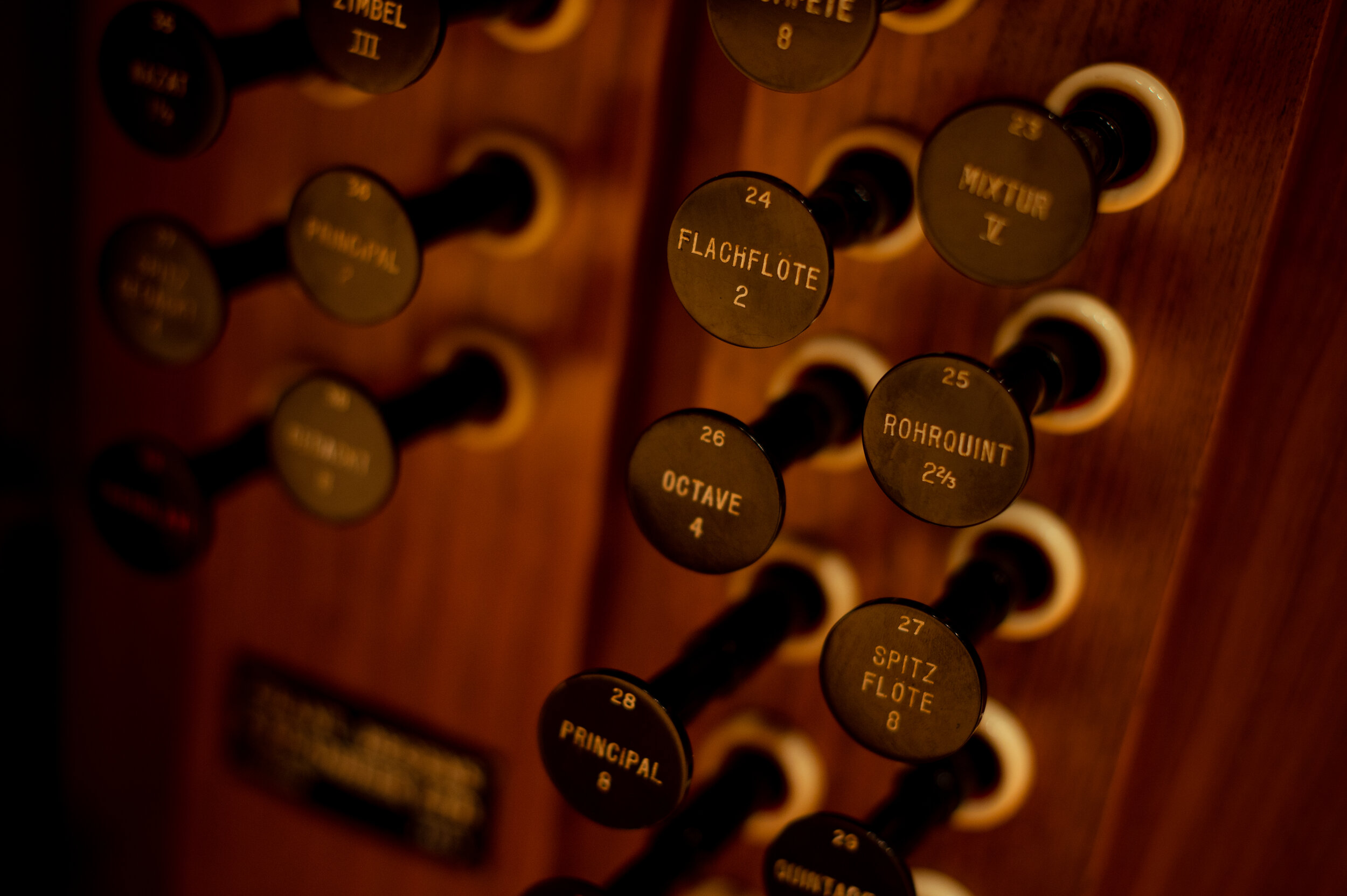
Debut solo album
Presenting the historically informed performance
of the dance-influenced organ music
of Johann Sebastian Bach and Dieterich Buxtehude
“My passion for the Baroque was ignited by Professor Peter Seymour while studying at The University of York. I’m delighted to bring to life this recording project and share my enthusiasm for early music.”
The project
The historically informed performance of seventeenth- and eighteenth-century organ repertoire is somewhat neglected, certainly on disc. The recognition of this particular art and of the music it brings to life is lacking amongst an otherwise flourishing portfolio of early music-making across choral, vocal, and instrumental repertoires. Following on from a Masters degree in Baroque performance practice and subsequent research and study, I believe that the performances I offer on this new and exciting recording replicate most closely that which the composers intended. They aim to present the instrument and its music in a way that stands proudly against its counterparts. The project will champion the informed performance of Baroque organ music and, more broadly, increase the awareness and importance of the organ and its repertory.
I am honoured to be surrounded by a recording team who share my enthusiasm for this project, all of whom are most highly regarded in their respective fields. The recording comprises works by Johann Sebastian Bach and Dieterich Buxtehude, performed on the celebrated Grant, Degens and Bradbeer organ of the Sir Jack Lyons Concert Hall at the University of York; both my alma mater and, in musical terms, what I consider to be my spiritual home! The organ is a wonderfully diverse instrument and produces a thoroughly engaging sound, capable of both beauty and ecstasy. The organ is certainly one that deserves to be heard.
The music
During the seventeenth-century, dance secured its position as a serious art discipline. As a result, dance music became prevalent across Europe, and composers of the period and indeed many since have turned to dance forms and structures as a rhythmic framework and inspiration for their composition; featuring perhaps most prominently in the Baroque is the organisational scheme of the dance suite. Dance music found itself inextricably woven into the fabric of both sacred and secular music, from court and opera house to church and cathedral. Of course, one may conclude that the influence of Baroque dance reaches far beyond the compositional stage, informing an array of performance decisions including articulation, tempo, phrasing, and, for string players, even bowings. In this sense, the historical distance between composer and performer is condensed and the music’s affection and stylisation unite with the gestures of its realised performance in the modern day.
Characteristics of early dance forms were incorporated into the works of many European composers. This particular collection focuses on its use by two leading forces in organ music of the German Baroque and indeed its development and evolution within Western music: Johann Sebastian Bach and Dieterich Buxtehude. Some of its more apparent manifestations appear in dance in the scherzo-like gigues and dance suites. Subtler uses of the sarabande (characterised most keenly by its held second beat) in the melancholic coloratura chorale prelude BWV 652, the fugue of BuxWV 149 and of course, the Passacaglia BWV 582, all of which take pride of place amongst the track listing.

The funding
The success of this project is in no small part thanks to the kind generosity and support of sponsors, both those who have already made contributions as well as those who continue to do so. The production costs of this recording project are significant and include the fees of the freelancers involved (whether as a recording engineer, producer, photographer or organ tuner) the recording venue, as well as the costs of practicalities such as travel expenses and hotel rooms for the course of the recording.
Although supported here by a stellar team, as a solo artist and the leader of this project, it falls to me to secure its funding and ensure its success. Like many other freelance musicians, the detrimental implications of this pandemic on both income and career progression have been significant. I’m thrilled that this recording will coincide with the beginning of a period of recovery for all involved in the arts, as well as marking a significant milestone in my life as a musician as well as delivering the completion of a significant project after more than a year of relative inactivity.
Contributions of any size are very welcome and gratefully received, and I am pleased to offer a range of benefits in recognition of the support. If you would like to contribute your support please get in touch using the contact page. By making a donation, you will play a vital part in bringing to life this important music. Thank you for your interest in this project
Make a donation
To support this project by way of a financial contribution, please get in touch. All donations are very gratefully received and your support contributes hugely to the success of this initiative.



